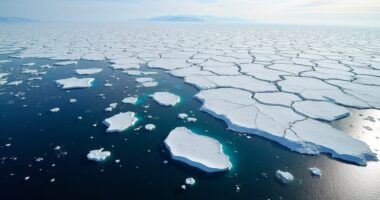Pesticides are quietly wreaking havoc on urban water life, creating a hidden crisis for macroinvertebrate diversity. These tiny yet mighty creatures are the backbone of aquatic food webs, yet their populations are plummeting due to pesticide runoff from manicured lawns and storm drains. This decline sends shockwaves through ecosystems, impairing nutrient cycling and water quality. The ironic twist? Urban areas rival farms in pesticide contributions. Discover what this means for us and our waterways—it’s a slippery slope!
Urban Pesticides and Their Ecological Impact
In the bustling world of urban life, where concrete jungles meet manicured lawns, pesticides are the uninvited guests that sneak in through storm drains, hitching a ride on rainwater and irrigation runoff. These chemicals, often applied with the fervor of a home gardener fighting a pest invasion, infiltrate urban waterways, leading to an alarming decline in macroinvertebrate diversity.
Macroinvertebrates, the tiny heroes of aquatic ecosystems, are highly susceptible to pesticide exposure. They serve as the foundation of aquatic food webs, supporting fish and birds. However, as pesticides enter streams and lakes, they disrupt these delicate communities, sending shockwaves through the ecosystem. Daily stream samples reveal a cocktail of pesticide mixtures, each with unpredictable toxicity levels, turning the waters into a chemical smorgasbord for unsuspecting invertebrates. Recent studies have shown that 16 dissolved pesticides are consistently detected in small streams across urban centers, exacerbating the crisis.
Macroinvertebrates, the unsung heroes of our waterways, face peril as pesticides disrupt their vital roles in aquatic ecosystems.
The repercussions extend beyond the macroinvertebrates themselves. A dip in their populations can cause a domino effect, reducing the resilience of stream ecosystems and impairing nutrient cycling. Regular water quality monitoring can help detect these changes before they become irreversible. Think of it this way: if macroinvertebrates were the kitchen staff at a restaurant, their absence would leave diners—fish and amphibians—hungry and unsatisfied. With fewer invertebrates to break down leaves and organic matter, water quality suffers, and the entire system begins to unravel.
Moreover, the frequent application of synthetic pesticides in urban lawns, often paired with fertilizers, amplifies toxicity levels in waterways. The irony? Urban areas, once thought to contribute little to pesticide runoff, now rival agricultural zones. Illegal dumping and careless disposal only add fuel to this ecological fire.
To make matters worse, these pesticides don’t just impact local wildlife; they raise alarms for human health too. Contaminated groundwater poses direct risks, while the persistent presence of these chemicals in aquatic organisms can lead to bioaccumulation, transferring toxins up the food chain. As pesticides wreak havoc on urban water life, the hidden crisis of macroinvertebrate diversity looms large, reminding everyone of the delicate balance inherent in nature.









